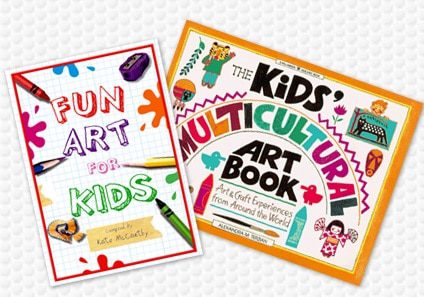Top Errors That Hurt When Printing an art book
Top Errors That Hurt When Printing an art book
Blog Article
Comprehending the Process Behind High-grade Art Book Printing for Art Lovers
When it comes to high-grade art book printing, comprehending the intricacies of the procedure can elevate your gratitude for the last item. As you explore the different parts of art book printing, you'll uncover insights that can change your viewpoint on art conservation and presentation.
The Significance of Paper Option in Art Book Printing
When it comes to art book printing, the option of paper can make or damage the end product. You desire your artwork to radiate, and the appropriate paper enhances shade vibrancy and information. Take into consideration aspects like weight, appearance, and finish; these aspects significantly influence exactly how viewers perceive your work.
As an example, a much heavier supply shares top quality and resilience, while a textured surface can add deepness to pictures. Smooth paper is outstanding for detailed recreations, allowing fine lines and subtle shades to appear crisp.
Don't fail to remember regarding the paper's illumination; a brighter sheet can assist shades pop, making your art much more eye-catching. You'll also intend to think of how the paper communicates with inks and whether it can deal with the printing process without warping or bleed-through. Ultimately, picking the right paper sets the phase for your art, guaranteeing it records the target market's interest equally as you envisioned.
Picking the Right Inks for Vivid Reproductions
Choosing the best inks is equally as vital as picking top quality paper to accomplish dynamic recreations in your art book. When you're publishing art work, you want colors that stand out and properly stand for the initial piece. Select inks with a high pigment concentration; these often tend to create richer and much more saturated shades.
You may consider utilizing archival inks, which stand up to fading gradually, ensuring your art book stays as striking as the day it was printed. If you're functioning with photographs or electronically created art, pigment-based inks can give a bigger shade range, improving information and depth.
Do not forget concerning the finish! Matte and shiny inks can drastically alter the look of your artwork, so believe concerning the look you're intending to achieve - art book. Eventually, the appropriate ink choice complements your paper option, producing a stunning aesthetic experience for your viewers
The Role of Color Monitoring in Print Quality
Color management plays an essential role in attaining high print quality for your art book. It ensures that the shades you see on your display translate precisely to the published web page. Without effective color monitoring, your vibrant artworks may show up plain or altered, undermining your creative vision.
To begin, calibrate your screen regularly. This step helps preserve constant shade depiction. Next off, make use of shade profiles tailored for your printer and paper type. These profiles direct the printer in duplicating shades properly, reducing discrepancies between digital and published versions.
When you prepare your data, take into consideration utilizing a shade area like Adobe RGB or CMYK, depending upon your printer's specs. Always evidence your job, as well; a test print can reveal any potential shade concerns prior to the final run. By focusing on shade monitoring, you guard the honesty of your art, ensuring your audience experiences it as you intended.

Comprehending Different Binding Strategies
Achieving the excellent seek your art book exceeds shade management; binding strategies likewise play a significant duty in its overall presentation and sturdiness. You have several choices to evaluate, each with its very own distinct features.
If you're going for a specialist feel, instance binding uses a durable alternative with a hard cover, best for showcasing your artwork. On the other hand, excellent binding offers an adaptable spine while keeping prices down, making it a popular selection for softcover books.
Spiral binding enables your art book to lay level, which is fantastic for presenting images without obstruction. At the same time, saddle stitching is suitable for smaller pamphlets, providing a tidy finish without the bulk.
Ultimately, the binding method you select need to reflect your artistic vision and exactly how you desire viewers to involve with your job. Ensure to consider these options thoroughly to accomplish the most effective end result for your task.
The Impact of Print Size and Layout on Presentation
While the option of print dimension and format might appear second to content, they greatly influence how your artwork is perceived. The measurements of your prints can either enhance or lessen the influence of your items. Bigger prints can attract visitors in, permitting them to value detailed information, while smaller sized styles might require even more intimate engagement.

Preservation Techniques for Durable Art Books
To ensure your art books stand the examination of time, it's important to execute effective preservation techniques. Start by storing them this contact form in a trendy, completely dry environment, far from direct sunshine and humidity. This stops fading and warping, maintaining your pages undamaged. Use acid-free storage space boxes or protective sleeves to secure them from dust and physical damages.
When handling your publications, constantly wash your hands or use cotton handwear covers to avoid oils and dust moving onto the pages. Avoid bending or creasing the spinal columns; rather, use book supports when presenting them.
For added security, take into consideration purchasing archival-quality products for any kind of repair work or improvements. Regularly inspect your collection for indicators of wear or damages, attending to issues quickly. By adhering to these simple techniques, you can ensure your art publications continue to be vibrant and available for many years ahead, preserving their elegance and worth for future generations.
Collaborating With Printers for Optimal Results
When you prepare to print your art book, selecting the ideal printer is necessary to achieving your vision. Clear communication about your expectations and needs will help guarantee that both you and the printer are on the same page. Let's explore just how to make this collaboration as smooth and reliable as feasible.
Choosing the Right Printer

Efficient Interaction Strategies
Efficient interaction is essential for turning your art book vision into fact, especially when working together with printers. art book. Beginning by plainly outlining your job's objectives, consisting of layout elements, preferred materials, and any type of certain printing strategies. Don't be reluctant to share your motivations and referrals; this helps the printer recognize your visual
Establish regular check-ins to talk about progression and attend to any concerns. Usage visuals, like mock-ups or samples, to communicate your ideas better. Be open to responses, as printers typically have useful insights that can enhance your project. Lastly, maintain a favorable relationship by being considerate and appreciative of their competence. This partnership will guarantee that your art book meets your expectations and beams in its last kind.
Frequently Asked Questions
What Are Typical Blunders to Stay Clear Of in Art Book Printing?
When publishing your art book, stay clear of typical mistakes like poor resolution photos, wrong color profiles, and overlooking page design. Do not fail to remember to proofread and confirm information to confirm your final product satisfies your expectations.
Exactly How Does Digital Printing Differ From Typical Printing Techniques?
Digital printing makes use of digital data to develop prints straight, enabling for quicker turnaround and customization. In contrast, conventional techniques involve physical plates, which can be time-consuming and less click this adaptable for little runs or special designs.
What Is the Typical Turn-around Time for Art Book Printing?
The typical turnaround time for art book printing differs, but you can expect it to take anywhere from a couple of weeks to a number of months. Variables like intricacy, amount, and printing approach all affect this timeline.
Can I Print a Restricted Version Art Book Financially?
You can print a restricted version art book economically by selecting cost-efficient products, optimizing print runs, and using electronic printing alternatives. Mindful planning and budgeting will certainly assist you accomplish quality without spending too much.
What Are the Environmental Considerations in Art Book Printing?
When taking into consideration art book printing, you ought to consider environment-friendly products, lasting inks, and energy-efficient procedures (art book). Choosing regional printers can also minimize your carbon impact, making your task both stunning and eco liable
Report this page